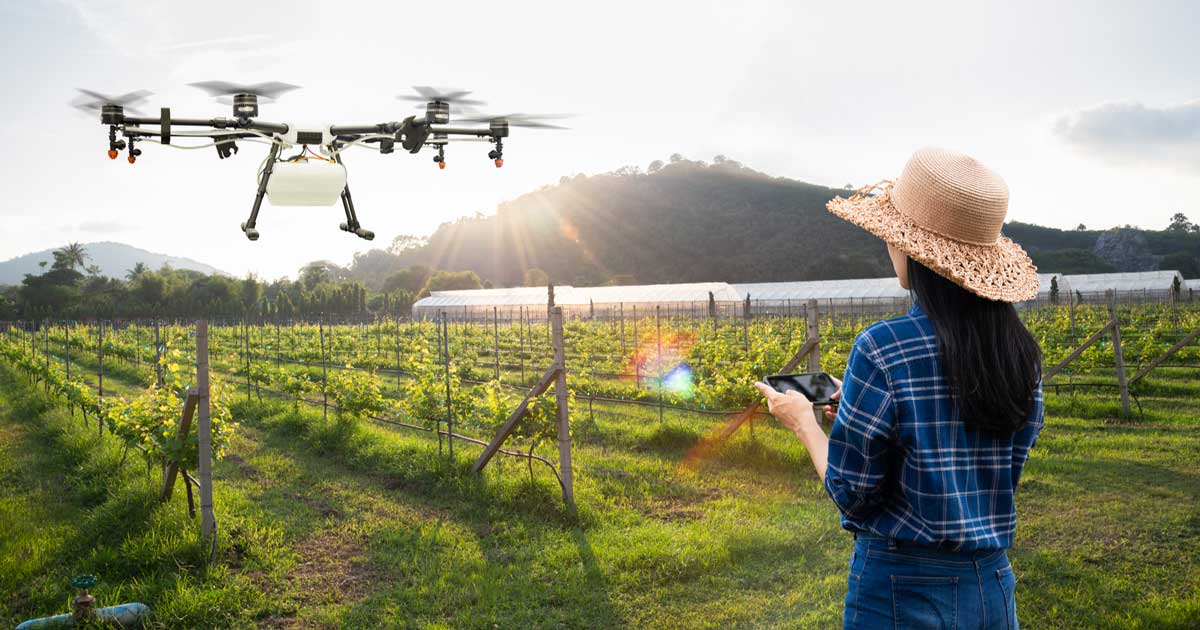Drones are aircraft of various sizes that do not require any pilot assistance. Drones come in varying degrees of autonomy. The application of drones in agriculture has addressed several issues facing the industry. Agricultural production faces many challenges due to an ever-growing population. In addition to facing a severe pricing crisis, agriculture needs to produce more to meet growing demand. The industry also lacks sufficient labor to ensure productivity increases. Urbanization, degradation of the environment, and shrinkage of fertile land lead to increased challenges for agricultural workers. Therefore, agricultural producers need to adopt innovative methods to boost productivity and ensure their sustainability over the long term.
Recently, drones have proven revolutionary in agriculture, along with other technological advancements. They could address many crucial challenges in agriculture. You can use drones to analyze fields and soil from a distance, monitor crop growth, schedule irrigation, and even control birds. In this article, we’ll discuss the types of applications of drones in agriculture as well as their pros and cons.

Types of Application of Drones in Agriculture
NDVI- Normalized Difference Vegetative Index
Modern drones can cover vast surfaces quickly and detect data that is invisible to the naked eye (like NIR). Drones can inspect crops from about 100 meters above by using NDVI or near-infrared sensors. UAVs can take multispectral images of plants to assess their health and monitor their changes. For NDVI values, a range of -1 to 1 is available. When the NDVI reading is higher, the vegetation is healthier, and when it is lower, the vegetation is dead or stressed.
Crop Analysis and Assisting Cultivation Operation
Before planting, drones are an excellent tool to assess the soil thoroughly without disrupting it much. Drones can produce three-dimensional maps of soils early in the season. Drones can also assess soil fertility, plan seed plantings, and determine what planting pattern. The use of UAVs is especially useful in monitoring vast farmlands, taking slope and elevation into account.
Application of Drones in Agriculture during Irrigation
Scheduling irrigation based on weather conditions, crop requirements, and other parameters can be laborious and time-consuming, particularly if a farmer has several fields. It is more accurate to measure crop moisture with drones equipped with thermal, multispectral, and hyperspectral sensors.
Calculation & Application of Fertilizers and Other Chemicals
Combining ground-based inspections with satellite data and images is essential to determine the amount and schedule of fertilization. It will increase accuracy, reduce excess fertilizers, and maximize yields. In agriculture, drones are better for applying nitrogen, phosphorus, and potassium fertilizers.
Advantages of Drones in Agriculture
In today’s agricultural environment, the application of drones in agriculture offers many advantages to farmers. Following are a few of them.
Optimum Saving of Time
It is very challenging for farmers to inspect large fields covering hundreds of hectares. Since drones can track their crops from the air and make regular observations of their crops, they are more efficient at this job in the short term.
Ensures Greater Accuracy
They can detect moisture in the soil and water even at a distance. NDVI index sensors on drones can calculate the IR reflection difference, allowing them to conduct health assessments that are not visible. By using drone-based multispectral images, three-dimensional maps can be created that are more accurate for analyzing soil conditions in surveyed areas.
Achieves Higher Agriculture Yield
The use of drones will allow farmers to reduce inputs like water and pesticides while increasing production, alleviating the global food crisis.
Drawbacks of Application of Drones in Agriculture
Following are the drawbacks or disadvantages of Agriculture Drones:
➨The operation of agriculture drones requires basic knowledge and skills.
➨Long flight times and long-range drones are more expensive. Features on drones also add to the price.
➨The government must grant clearance before its use.
➨It utilizes the same airspace as commercial aircraft, so it may interfere with piloted flights if it passes over their flight path.
➨Extreme weather conditions make it difficult for them to fly.
Conclusion
The development of agricultural drones represents an incredible advancement of technology that will eventually become an indispensable tool in agriculture. Drones in agriculture face a few limitations as well if they are to reach their full potential. Many farmers are reluctant to abandon traditional farming practices in favor of new technology. Therefore, farmers should be more aware of the benefits of using drones. In this way, drones can greatly enhance agriculture’s future.

